Madonna del Granduca editorial stock image. Image of raffaelle 152293744

MADONNA DEL GRANDUCA RAFFAELLO Blog di pociopocio
Provenance Catalogue Raisonné References Title: Madonna del Granduca, the standing Virgin holding the Christ child Artist: Raphael Morghen (Italian, Naples 1758-1833 Florence) Artist: Intermediary draftsman Vincenzo Gozzini (Italian, active Florence, 19th century) Artist: After Raphael (Raffaello Sanzio or Santi) (Italian, Urbino 1483-1520 Rome)
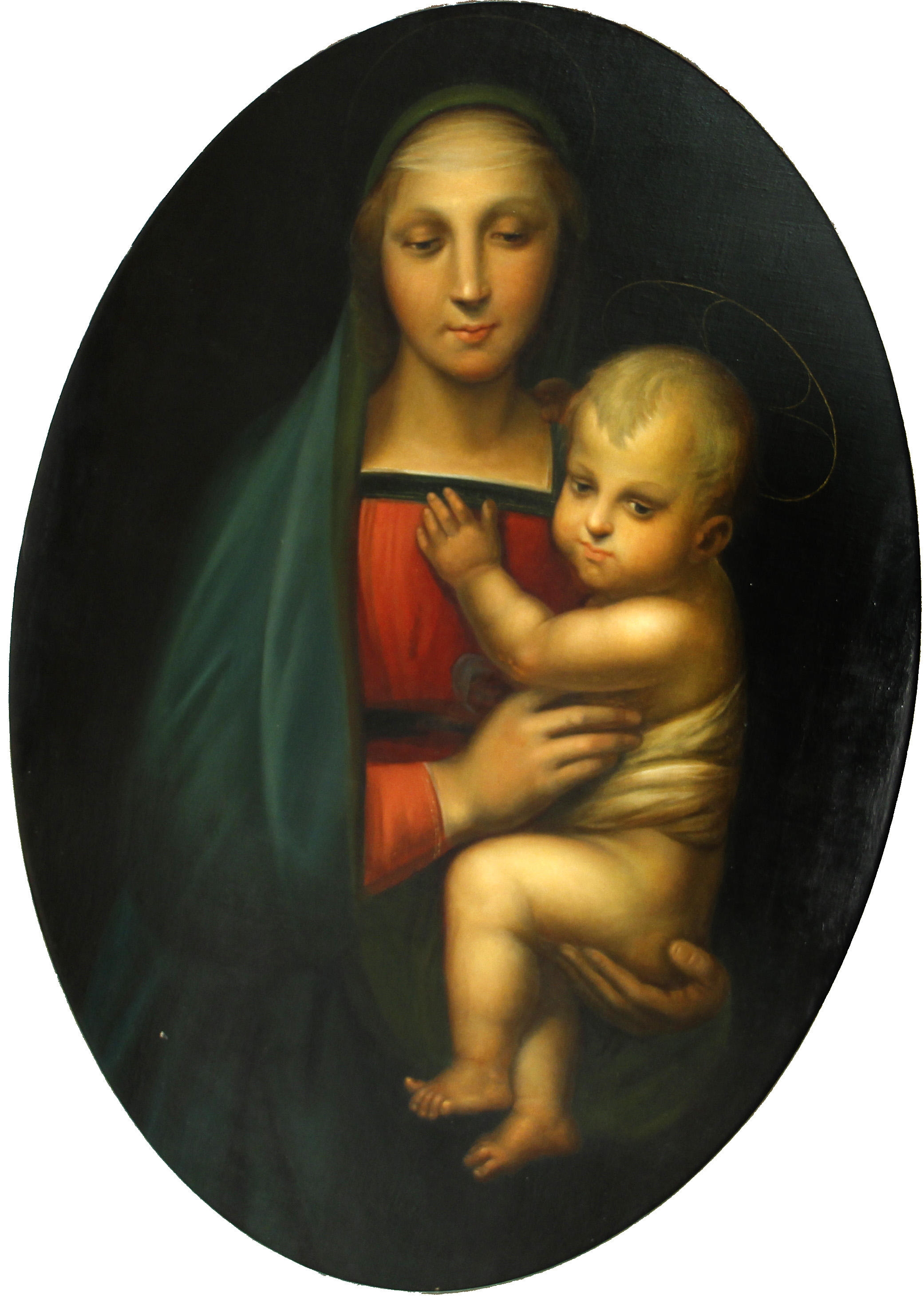
Raffaello Sanzio Madonna del Granduca MutualArt
‣ The Madonna del Granduca (1504) in the Pitti Gallery in Florence shows the pre-eminent influence of Da Vinci. Its simple composition is a prototype for the future Madonnas of Raphael's last Florentine period. The figures of the Virgin and Child emerge from a dark background (an element evidently derived from Leonardo), bound together by a.

Lot Madonna del Granduca, oil on canvas, artist unknown, after Raphael Santi (14831520
villanomd. Dr. Villano is a board-certified facial plastic surgeon in Bend, Oregon. He provides surgical and non-surgical enhancements including Botox, Dysport, Restylane, microneedling, fotofacials, facelifts, eye lifts, nose surgery, cheek augmentation and much more. Schedule your consultation today.

Madonna del Granduca. Opera di Raffaello Sanzio
The Madonna del Granduca (1504) in the Pitti Gallery in Florence shows the pre-eminent influence of Leonardo. Its simple composition is a prototype for the future Madonnas of Raphael's last Florentine period. The figures of the Virgin and Child emerge from a dark background (an element evidently derived from Leonardo), bound together by a sweet.

Madonna Del Granduca 19th Century Italian Oil Painting C & A Schwicker Italy 1799656608
Madonna dell Granduca. Artist. Raphael. Paintings. Adam and Eve Angel (fragment of the Baronci Altarpiece) Ansidei Madonna Baldassare Castiglione Colonna Madonna Coronation of the Virgin Deposition of Christ Disputation of the Holy Sacrament Head of a Youth Possibly a Self-Portrait La Belle Jardiniere Madonna and Child Enthroned with Saints.
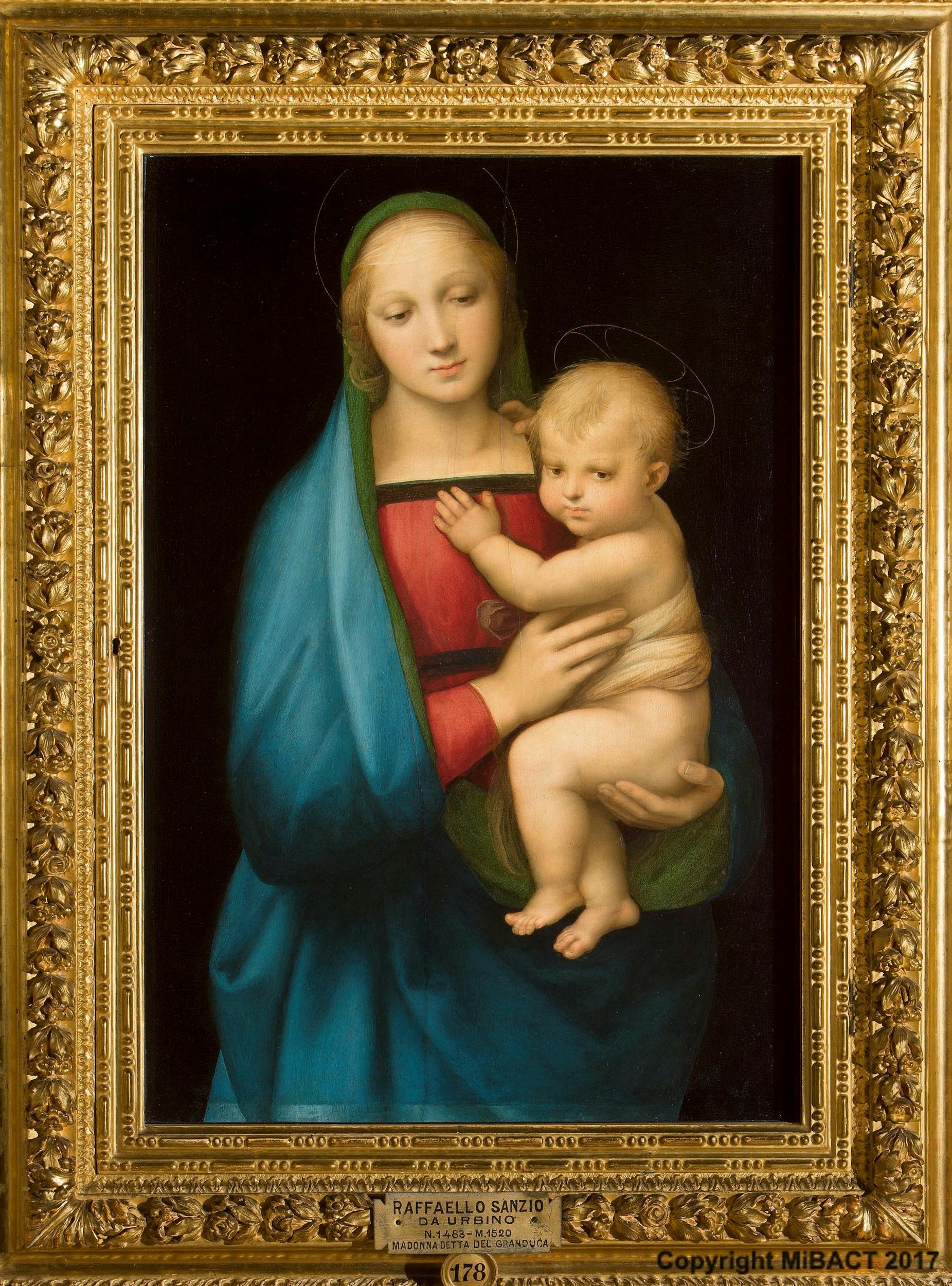
The Madonna del Granduca by Raphael Artworks Uffizi Galleries
Madonna del Granduca, also known as the Madonna of the Grand Duke, is a painting by Italian Renaissance artist Raphael. Completed in the early 1500s shortly after his arrival in Florence, it depicts the Virgin Mary holding the infant Jesus. One of Raphael's most beloved works, this painting demonstrates his ability to represent religious.

Madonna & Child 19th Century Watercolour Painting After The Original Madonna Del Granduca By
"Madonna del Granduca" by Raphael - Palazzo Pitti, Florence " Madonna in the Meadow" by Raphael - Kunsthistorisches Museum " The Alba Madonna" by Raphael - National Gallery of Art, Washington, D.C. " Small Cowper Madonna" by Raphael - National Gallery of Art, Washington, D.C. " The Madonna of the Pinks" by Raphael - National Gallery, London
.jpg)
Madonna del Granduca by Raffaello Sanzio Raphael (31151)
The Madonna del Granduca is one of the most famous Madonnas by Raphael, its authorship has never been questioned, but there is no reliable information about the creation of the picture and its location until the 17th century. It is believed that the artist painted the Madonna del Granduca around 1504.

Madonna del Granduca editorial stock image. Image of raffaelle 152293744
The Madonna del Granduca is a Madonna painting by the Italian renaissance artist Raphael. It was probably painted in 1505, shortly after Raphael had arrived in Florence. The influence of Leonardo da Vinci, whose works he got to know there, can be seen in the use of sfumato.
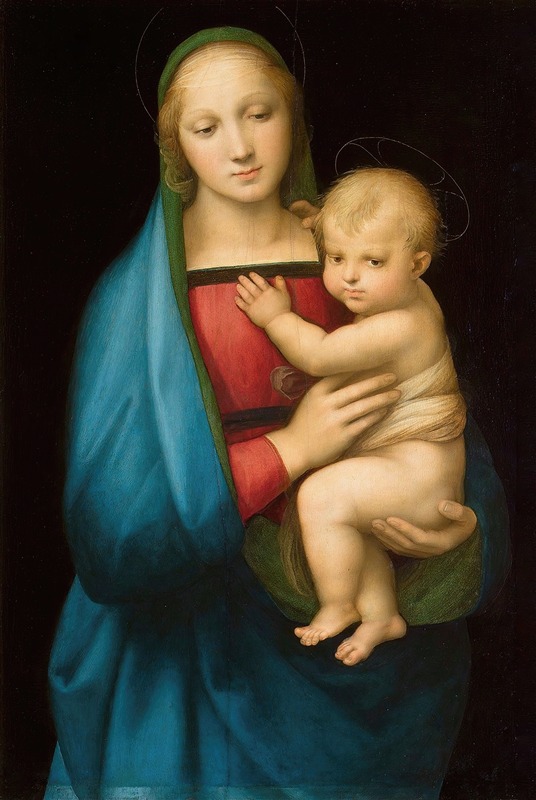
Madonna del Granduca by Raphael Artvee
The Madonna del Granduca is a Madonna painting by the Italian renaissance artist Raphael. It was probably painted in 1505, shortly after Raphael had arrived in Florence. The influence of Leonardo da Vinci, whose works he got to know there, can be seen in the use of sfumato. The painting belonged to Ferdinand III, Grand Duke of Tuscany, from whom it got its name.
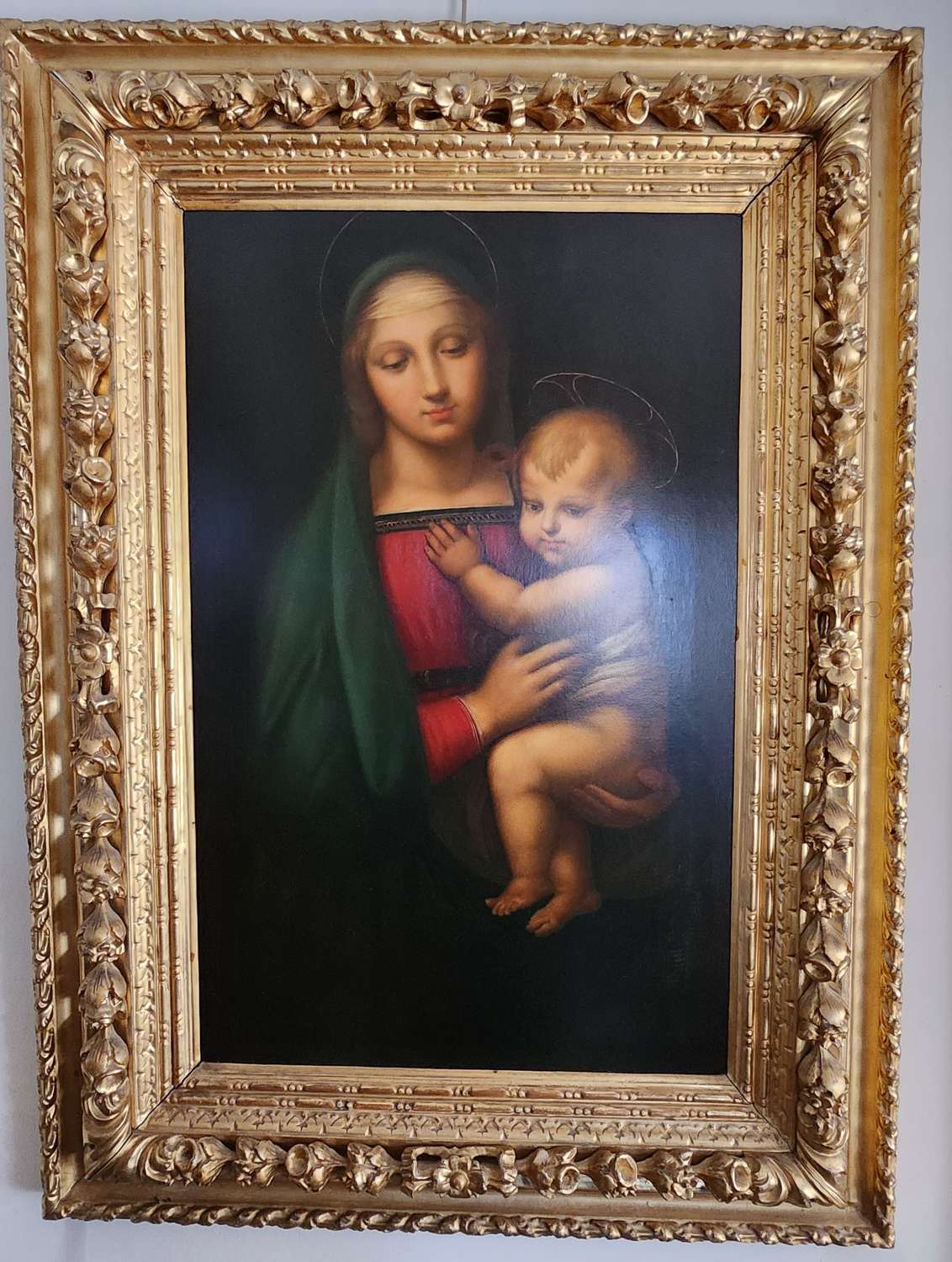
Santi Corsi 'Madonna del Granduca" after Raphael
Favorites. "Madonna Granduca" is one of the most famous paintings by Italian artist Raphael Santi. The subject matter of the painting is quite traditional - a depiction of the Virgin Mary with a baby in her arms. Some art historians suggest that the painting was created by Raphael in 1504-1505, soon.
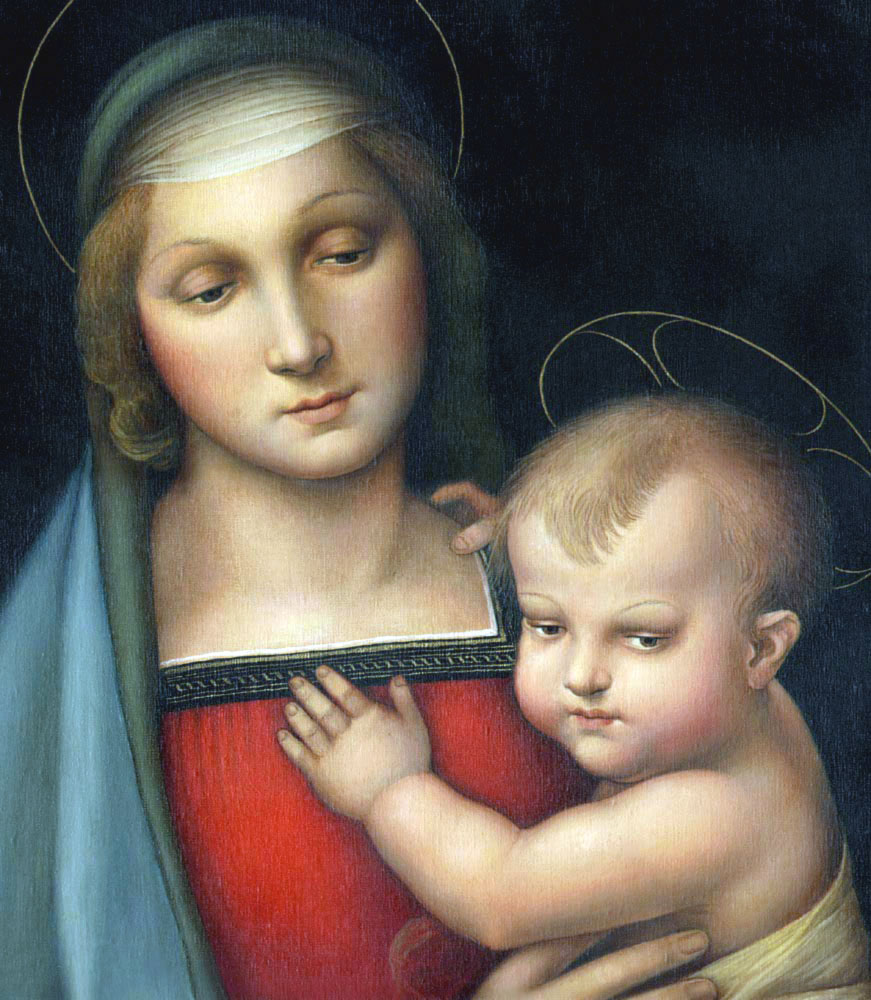
Madonna del Granduca opera di Raffaello
AN UNPRECEDENTED MOMENT IN ART HISTORY When Raphael arrived in Florence, Michelangelo's trailblazing statue of David had just been erected in the Piazza della Signoria. The paint on Leonardo da Vinci's latest portrait (a depiction of a certain Lisa, wife of a wealthy wool merchant) was still wet.

Raphael "Madonna del Granduca" 1505 ART Pinterest
It was formally known as Madonna Del Granduca a name inspired by the Grand Duke. This is a more symbolic Christian art and it is known to be very influential among many Christians. This beautiful artwork shows his more subtle approach to come up with a great piece of art while maintaining its overall simplicity.

Madonna del Granduca Raphael sanzio reproduction art High quality Handpaintedin Painting
The Madonna del Granduca is one of Raphael's most famous works and one of the images identified with the Palatine Gallery, the museum with the world's highest number of canvases and panels by the artist. It is one of Raphael's best-loved works, in which he shows all of his skill in representing holy subjects in an immediate, human manner.

Madonna del Granduca Canvas Transfer by Raphael Anazao Galleries
'The Madonna del Granduca' was probably painted in 1505, shortly after Raphael had arrived in Florence. The influence of Leonardo da Vinci, whose works he got to know there, can be seen in the use of sfumato. The painting belonged to Ferdinand III, Grand Duke of Tuscany, from whom it got its name.

'The Granduca Madonna' Medici Society Maria / Mary A4 Poster, Poster Prints, Posters, Raphael
The Madonna del Granduca is a Madonna painting by the Italian renaissance artist Raphael. It was probably painted in 1505, shortly after Raphael had arrived in Florence. The influence of Leonardo da Vinci, whose works he got to know there, can be seen in the use of sfumato.